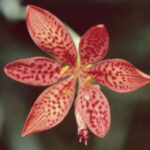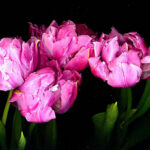There are some flowers whose shapes have a certain charm to them. One of those shapes for me is a bell. Bell shaped flowers, whether they are lily of the valley or campanula, look beautiful when grouped together with all of their different colors mixed together. This guide will describe some of the flowers that can be planted in one unique garden:
Bellflower, or campanula. There are about three hundred species of the campanula and while they all have the same, similar shape, come in different plant sizes, heights, and colors. The Canterbury Bells species is native to Great Britain and comes in white, blue, and mauve. This variety also prefers cooler climates and grow between two to three feet high. The Bluebell is another variety of campanula. Most nurseries carry at least a few varieties of the bellflower. The campanula likes full sun or partial shade, planted in well drained soil at least one foot apart. Because the bells tend to grow in rows along the top stem, the plants can become heavy and will need support. Wooden stakes will provide the support these beautiful flowers need. Annual campanula can be planted directly in the ground after the last frost, while perennial campanula can be started indoors during the early spring, then transplanted outdoors in the garden.(1)
Lily of the valley grows wild in the woods but can be added to any garden. While these are not formally thought of as being bell flowers, the tiny white flowers that grow up the delicate 8″ stems are indeed bell shaped and worthy of inclusion in this garden. Lily of the valley have a beautiful fragrance that makes it a long time favorite of perfume manufacturers. This flower makes a great cut flower too but should not be handled too much: all parts of the lily of the valley are highly toxic to touch and of course, should never be taken internally, for the plant has high levels of heart inducing trauma, including death.
The mountain cranberry is more of a bush but has tiny bells, about the same shape as the lily of the valley, but in pale pink. The cranberry fruit is edible but usually tart before they are frozen. This plant likes cooler climates too and will grow to 16″ tall. The mountain cranberry prefers shade and acidic soil to thrive in. This type of cranberry is probably better known as Lingonberry and is high in vitamins A, B, C, and minerals including potassium and phosphorus.
Yellow waxbells, while not native to the North American continent, can certainly be grown in gardens that have soil rich in humus. The flowers grow on shrubs that are 24″ tall. The flowers themselves are 1 1/2″ long, with five points on each flower. Yellow waxbells blossom in the late summer and should be kept watered during dry periods.
When planting, place the smallest ones out in front, like the lily of the valley and dwarf varieties of the campanula. Any bush types like the mountain cranberry and yellow waxbells can be placed in the center of the garden. Water well after planting. Enjoy your bell shaped flowers!
1. http://www.botany.com/campanula.html



